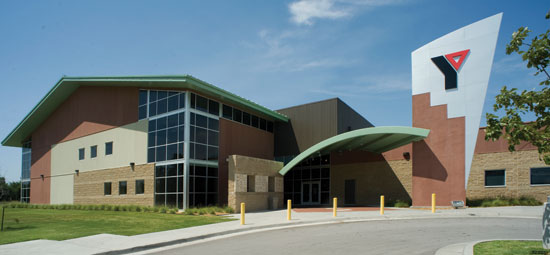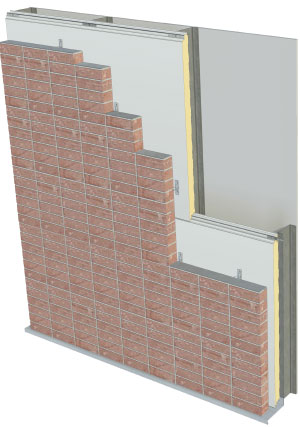Metal Panel Claddings: Varied Expression, Consistent Performance
Custom Appearance, Stock Cost
That project and others demonstrate that metal panels integrate well with other materials. Because metal panels can be custom fabricated to meet any project's design specifications, there are few limits to the scope of a building's complexity in terms of how the metal panels interact with other building products. Despite its complex angles and contours, for example, Frank Gehry's stainless-steel-skinned Frederick R. Weisman Art Museum at the University of Minnesota has plenty of windows.
Industry professionals say metal panel systems—whether single-skin panels, IMPs, or MCMs—can be employed for almost any conceivable use. “Custom fabrication and finishing elements like concealed fasteners allow architects to hide attachment points, if they choose, and joints can be detailed in a number of ways,” says Ken Buchinger, vice president of business development and research & development (R&D) for the metal claddings manufacturer MBCI. The ability designers now have to use metal panels, either vertically or horizontally, can be attributed in large part to advancements in coating and paint products that manufacturers use on the panels themselves. Those coating- and paint-product improvements have made metal-panel products and materials more resistant to fading. Industry experts say that paint applied during the manufacturing process is highly resilient and lasting.
“Improved coating and paint products have also given manufacturers the ability to mask the directional structure that's inherent to materials like aluminum,” Buchinger adds. While many products in use today are coated to give building exteriors more protection against corrosion, plenty of architects choose natural metals like raw aluminum, copper, and zinc for their distinctive look. They are also favored for the ability of the metals to age very well and remain exceedingly durable for decades of building life cycle.
In fact, the factory-applied coatings “provide protection against UV rays, corrosion, humidity, acid rain, and a wide range of chemicals and other pollutants,” according to an American Institute of Architects (AIA) presentation, Insulated Metal Wall and Roof Panels for Sustainability and Energy Efficiency. They also “provide gloss retention, and resist chalking, fading, chipping, and dirt retention.” In addition to protecting metal panels, factory-applied coatings help manufacturers offer clients a wide range of aesthetic possibilities, including custom color matching, textures, and special finishes such as metallics.
“There are numerous reasons for alteration of the surface of sheet metal roofing materials,” according to Haddock in his Metal Roofing from (A) Aluminum to (Z) Zinc white paper. “One is corrosion protection. Another is to make a metal solderable or more compatible metallurgically. Then, there are also appearance-related reasons,” he adds. “In other cases, the aesthetic objective of an applied finish is not to preserve, but to mask the natural mill finish.” Most manufacturers apply finishes on both metal faces of an IMP or MCM, allowing for equal protection and more options in façade detailing.
Aesthetic Opportunities
Treated steel sheets such as bare steel with a coating of corrosion-resistant aluminum-zinc alloy—similar to galvanized steel, which is coated in zinc—are another product that's become increasingly popular among architects for its modern look and durability as an “unfinished metal.” Invented and introduced to the marketplace by Bethlehem Steel in 1972, aluminum-zinc-coated carbon steel panels provide a steel substrate that can be painted or installed as is. The award-winning Lester E. Palmer Events Center in Austin, Texas, which was designed by Barnes Gromatzky Kosarek Architects, features a sleek, contemporary tent-like roof that was constructed using a steel panel system with the aluminum-zinc coat.

Photo courtesy of MBCI
In Tulsa, Oklahoma, this 46,250-square-foot YMCA building designed by PSA-Dewberry, uses insulated wall panels with a masonry look, with good R-values for energy efficiency and hidden fasteners.
On the other end of the finish spectrum are much more textured finishes on the metal panel substrates. Novel laminating techniques have been developed for metal-panel manufacturing that imbue the surfaces with a three-dimensional, cementitious quality. Unlike actual cementitious building exteriors, which absorb water that can be drawn into the building by capillary action or driven in by solar heating, these metal building exteriors perform well as barrier walls and rainscreen walls.

Image courtesy of MBCI
One relatively new product, according to industry leaders, is an IMP that serves as a backing material for an exterior brick face.
Just as many architects choose metal for aesthetic reasons, they also choose metal wall-and roof-panel products with an eye toward ensuring that a structure is weathertight and performs well over time. Metal roof products often come with factory-applied sealants in the panel joints, particularly products that are used on low-slope roofs, which can be installed directly over rafters and joists. Standing-seam panels have raised edges, or profiles, that attach to one another above areas where water runs off the roof's surface. For steeper-slope roofs, most projects call for metal-panel systems to be installed over strong, watertight decks. To ensure that exterior walls are also watertight, architects employ metal-panel systems that work as either rainscreens or barrier walls. The former is a system that is designed with the expectation that the exterior skin will prevent most but not all water from penetrating that surface. The latter, barrier type counts on the exterior skin keeping all moisture out.
While a metal surface itself is by definition impermeable, the attachment points between panels need to be equally as watertight in order for the system to perform adequately. To that end, manufacturers design interlocking metal wall panels with factory-applied sealants. While single-skin panels are also designed and manufactured with interlocking edges, industry professionals recommend using those products as rainscreen walls or drainage assemblies, which allow water to drain off in a ventilated area between the exterior surface and an insulated backing wall.
Just as new buildings need to keep water out, existing structures need to continue to perform in that area. In fact, the retrofit market is a growing one for the metal-panel industry, according to MCA's Kriner, and architects working with metal exteriors are exploring a range of design options. For example, wall and roof panel systems can be installed over a broad range of surfaces and substrates. This makes metal panel systems an ideal choice for school building upgrades, which are needed frequently, given the great number of older schools around the country. Some of these have been overcladding approaches, where the metal panels or IMPs are hung on an existing exterior surface such as CMU or brick veneer.
MCA and some manufacturers say the life cycle of metal makes the material a cost-effective choice for architects, builders, and end-users, for new construction and retrofit projects alike. And as manufacturers continue to make improvements in their products, architects can expect even more versatility, says Buchinger. One relatively new product, according to industry leaders, is an IMP that serves as a backing material for an exterior brick face.









